2021 Pay Equity Trends
What Leaders in Fair Pay
are Doing Differently
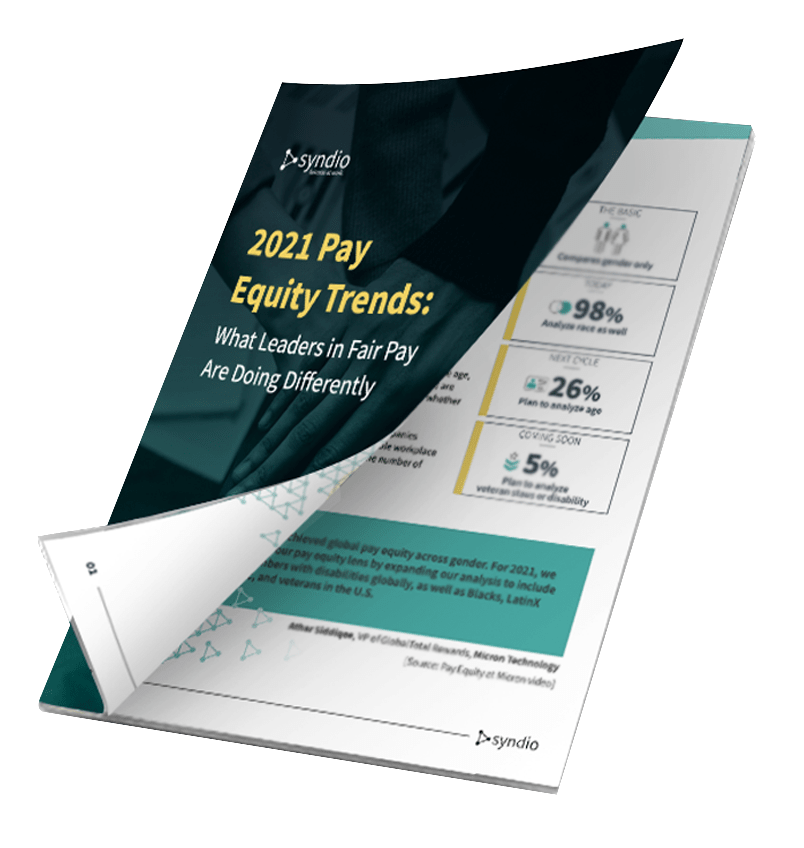
New research identifies 5 pay equity trends
Pay equity is top of mind for business leaders, but where should you focus? What data should you be analyzing? How often? How and when do you communicate to employees and publicly?
Based on survey responses from more than 50 leading companies and patterns observed from our customers' pay equity analyses, we identified five trends to guide your pay equity strategy as we head into 2022.
Dig in to the report to see the data behind the trends and get advice from leaders in pay equity.

1. Analyze race and gender
Companies are including race in pay equity analysis
Pay equity has historically focused on comparing pay by gender, ensuring that women and men are paid equally for performing the same work. But our data shows that leaders in fair pay are going beyond just gender. Before the murder of George Floyd in May 2020, only 50% of Syndio customers analyzed race. Today, nearly all (98%) analyze both gender and race.
Companies are also starting to look at additional comparator groups based on demographics like age, sexual orientation, and veteran status - and analyzing pay in a more intersectional way. While 18% of respondents currently analyze age, 26% plan to do so in their next cycle. A small percentage (5%) are also starting to analyze pay based on veteran status and/or whether an employee has a disability.
We expect this trend to continue in the future. As companies broaden their scope of what makes a fair and equitable workplace for all employees, they will also need to increase the number of comparator groups.
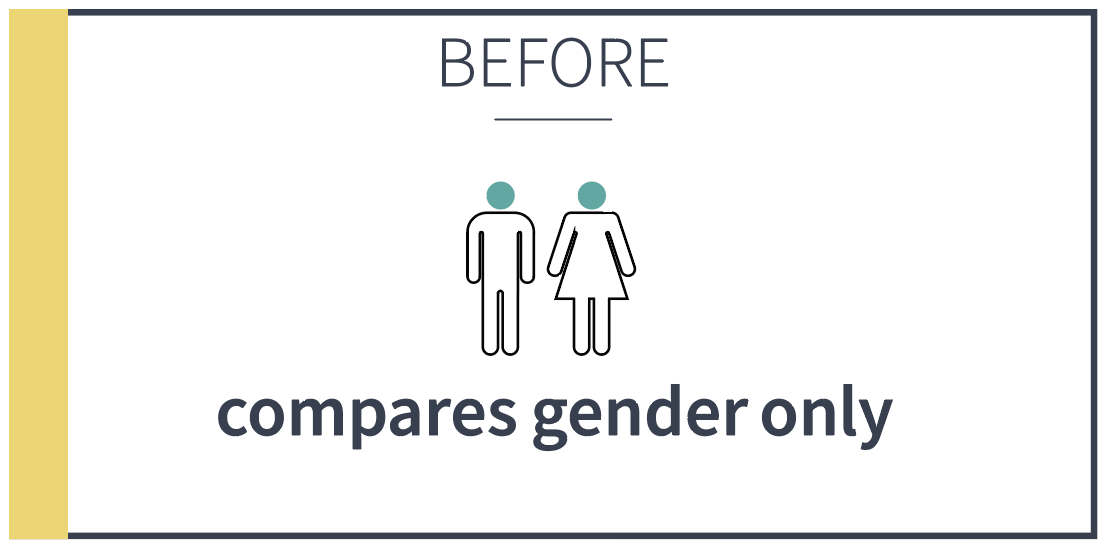
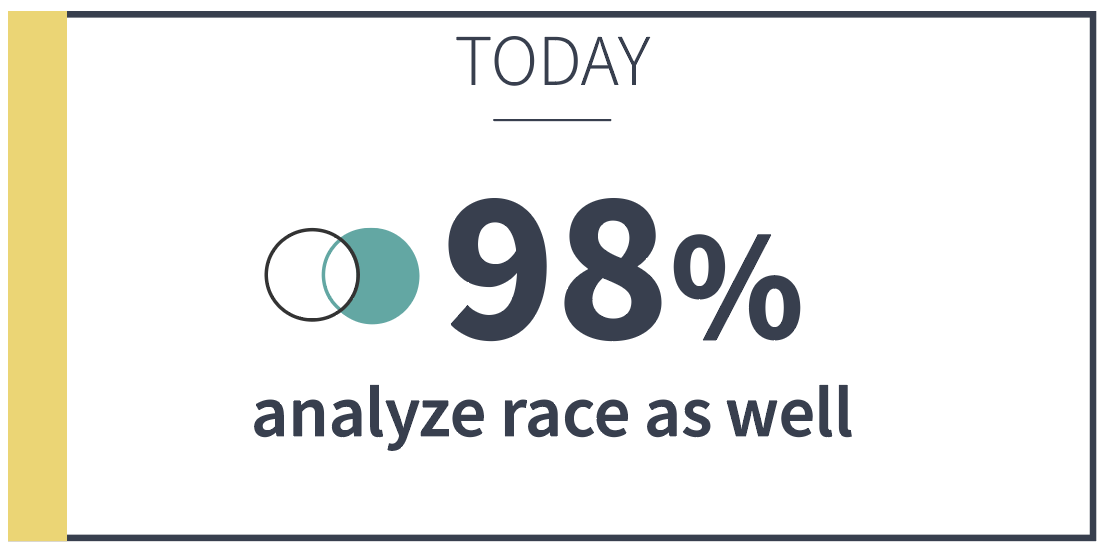
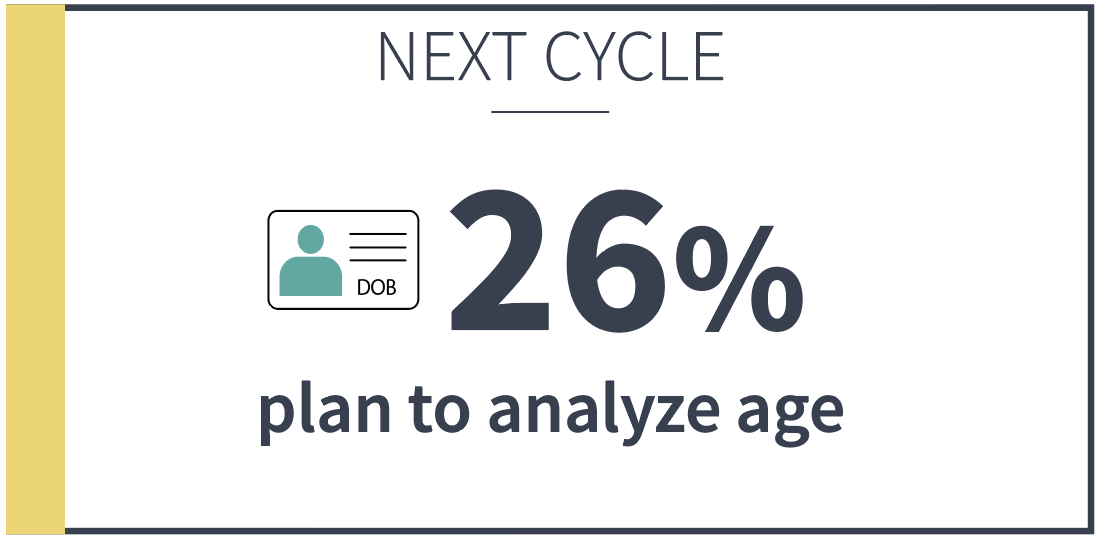
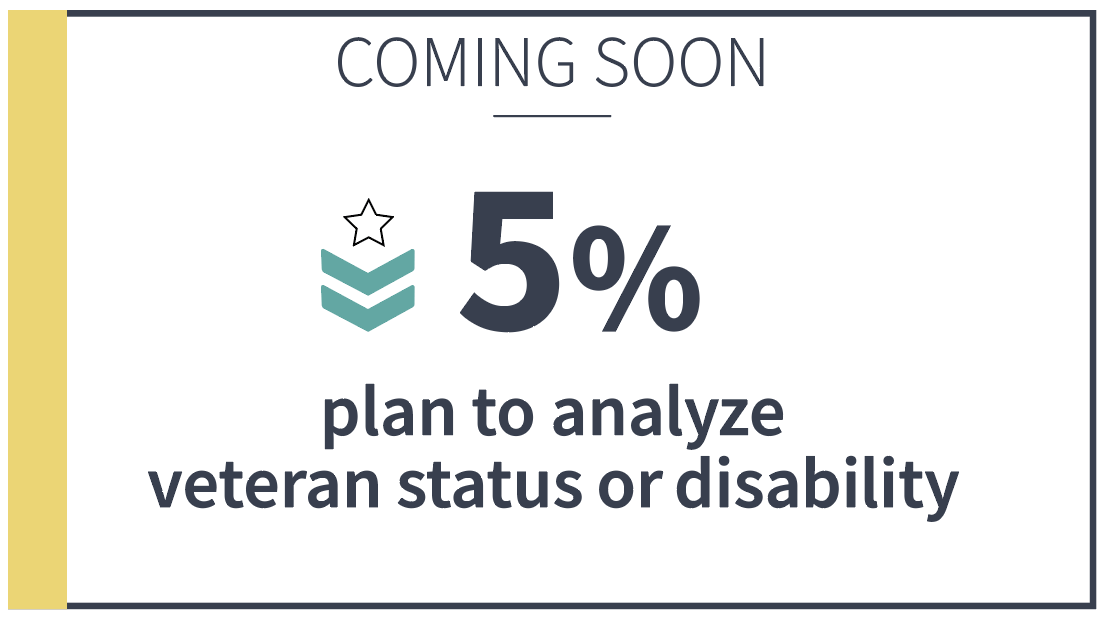




2. Analyze base pay and equity/stock
Companies are analyzing different types of compensation
Pay equity leaders are also starting to analyze different types of compensation beyond base pay. Of those companies that have equity/stock as part of compensation plan, our data shows that:

review equity/stock in their current analysis

plan to review equity/stock in a future analysis

do not plan to review equity/stock
While survey data did not include other forms of compensation (like bonuses), we expect the trend of analyzing total compensation will continue to increase. As employees start to ask about the full scope of compensation beyond base pay, companies proactively addressing this will be in a stronger position to attract and retain talent.
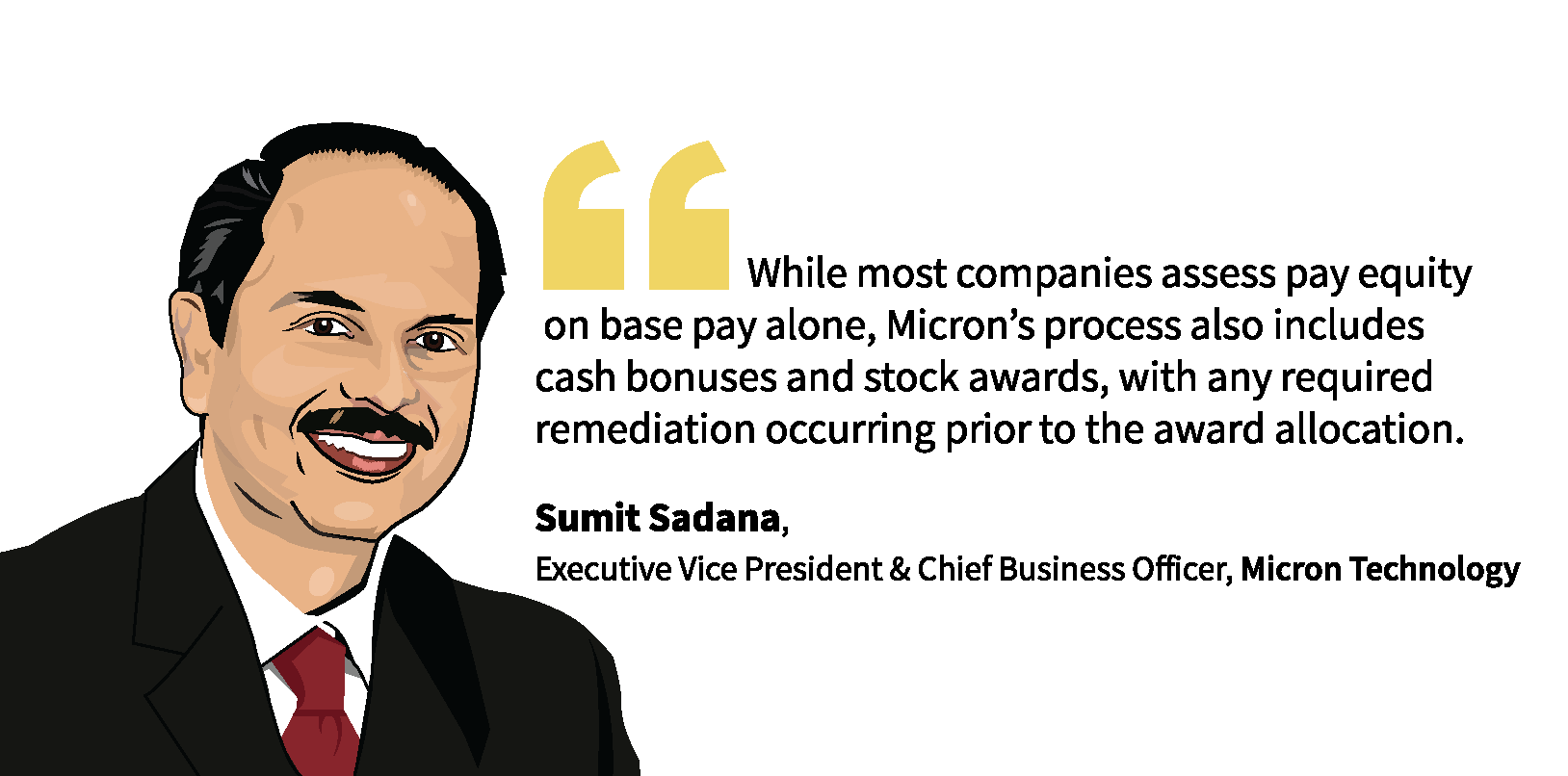
3. Budget for pay equity adjustments
More companies are budgeting for pay equity adjustments
As pay equity analysis becomes standard for all organizations, they're realizing that pay disparities aren't a one-time problem. That means they need to budget for it. Our survey shows that in 2020, less than half of respondents (46%) had a line item for pay equity adjustments within their salary budget planning. In 2021, we saw a significant jump, with 61% of respondents budgeting for pay equity.
4. Analyze pay disparities more frequently
Companies are analyzing pay equity more frequently - and moving towards prevention
Pay equity leaders are dialing up the frequency of pay equity analysis and starting to take a more proactive approach to not only fixing pay disparities but also preventing them from happening in the first place. While the majority (70%) of companies analyze pay equity once a year or less, nearly a third (30%) have started to analyze quarterly or every six months.
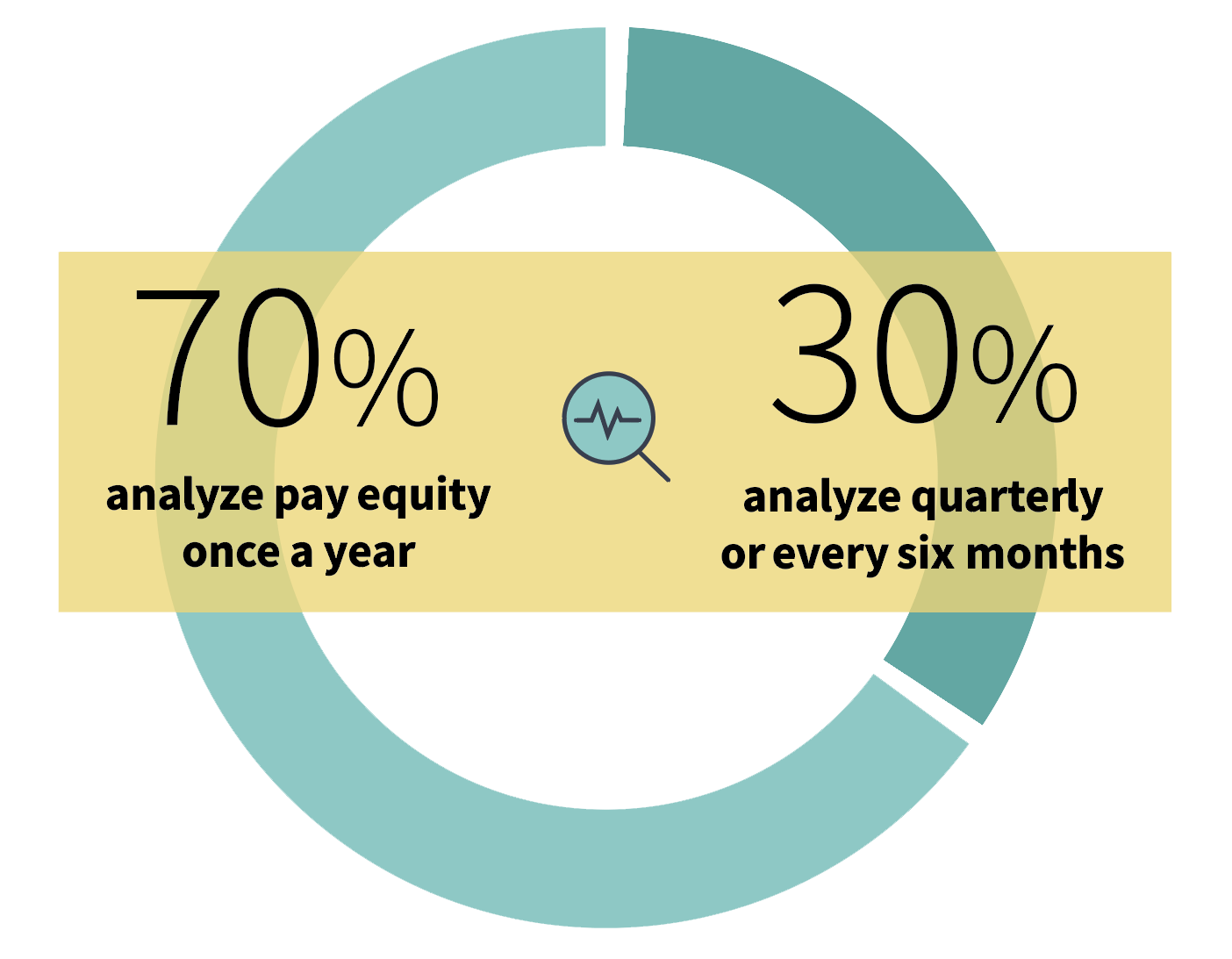
What's even more telling is that two-thirds of respondents (65%) would like to be conducting pay equity analysis more frequently than they currently are, and three-quarters (76%) of respondents would like to analyze pay equity more frequently than once per year. In a related trend, companies are also starting to look at internal pay equity at the moment of hire, instead of relying solely on external salary rates. By using pay equity data to shape starting salaries, companies are preventing pay disparities from forming - reducing legal risk and remediation fees down the line.
would like to be conducting pay equity analysis more frequently
would like to analyze pay equity more frequently than once per year
5. Prepare for increased pay transparency
Companies are driving towards greater transparency
In the past, companies were afraid to talk about pay equity and it was kept in the shadows. But the tide is turning. In 2021, 41% of survey respondents disclosed to their employees that the company was doing a pay equity analysis, 20% shared high-level results with their employees, and 7% went public with those results.
would like to be conducting pay equity analysis more frequently
would like to be conducting pay equity analysis more frequently

The trend towards pay transparency will only continue to grow. As we head into 2022, we expect to see many more companies take the reins on the pay equity conversation and communicate results - both internally and publicly - once they reach a pay equity milestone. That means doing the proper leg work and sharing results in a way that educates on both the methodology and the findings.

Companies are also choosing to undergo a rigorous, independent evaluation of their pay equity data and practices. For example, seven companies - including American Airlines, Anthem Blue Cross Blue Shield, Databricks, and NerdWallet - were recently certified by Fair Pay Workplace, a nonprofit organization providing a "verified, trusted, and transparent system that sets a new
[fair pay] standard."
Pay equity platforms support the shift to continuous pay equity
As demands for fair pay escalate, companies are turning to pay equity platforms to help them shift from one-off, static analyses to a more ongoing, self-sufficient, and proactive approach. This technology is designed to make it easy to analyze, resolve, and prevent pay disparities across gender, race, and other comparable groups.
The top 5 benefits of using a pay equity platform are:
Speed.
Complete an initial pay equity analysis in a fraction of the time it takes with a manual analysis.
Real-time insights.
Automate continuous pay equity analysis - so you always know where you stand.
Self-sufficiency.
Embed pay equity directly into your pay strategies and compensation cycles.
Agility.
Easily add or adjust comparator groups or new types of compensation for real-time insights.
Prevention.
Proactively analyze and correct pay before compensation changes, set fair starting pay, and uncover root causes - preventing problems before they arise.
In February-March 2021, Syndio surveyed 110 companies who use our software and received 57 unique responses from a combination of pay equity practitioners (those conducting the analysis) and leaders overseeing pay equity programs. Most respondents (70%) worked in Total Rewards or Compensation. Respondents were split between organizations with fewer than 10,000 employees (52%) and more than 10,000 employees (48%), and spread across industries Technology (35%), Healthcare/Pharma/Biotech (16%) and Retail/Travel/Hospitality (14%) having the highest representation.








